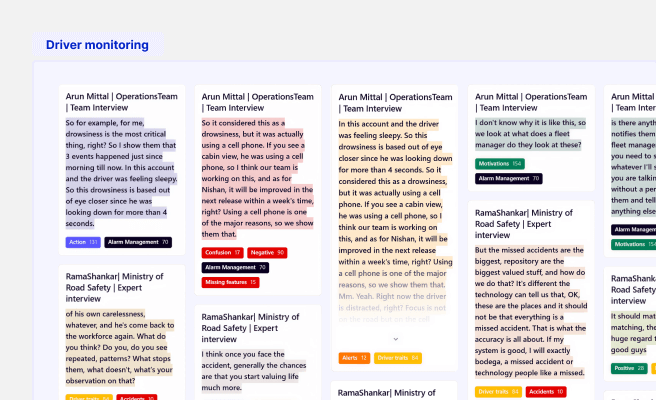Technology Transfer
<p>Technology transfer is a crucial process in the innovation ecosystem. It involves the movement of skills, knowledge, technologies, methods of manufacturing, samples of manufacturing, and facilities among governments, universities, and other institutions. This process ensures that scientific and technological developments are accessible to a wider range of users who can further develop and exploit the technology into new products, processes, applications, materials, or services. The primary goal is to ensure that innovations reach the market and benefit society.</p>
<p>Historically, technology transfer has played a vital role in advancing industries and improving quality of life. For example, NASA's technology transfer program has led to the commercialization of numerous space technologies that are now used in everyday products, such as memory foam, scratch-resistant lenses, and even advancements in water purification systems.</p>
<h2 id="importance-of-technology-transfer">Importance of Technology Transfer</h2>
<p>Technology transfer fosters innovation by bridging gaps between research institutions and the commercial sector. It helps in:</p>
<ul>
<li><strong>Accelerating Innovation:</strong> By transferring technology from labs to the marketplace, new products and services can be developed more quickly.</li>
<li><strong>Boosting Economic Growth:</strong> Commercializing new technologies can lead to the creation of new industries and job opportunities.</li>
<li><strong>Enhancing Competitiveness:</strong> Companies that adopt new technologies can improve their competitiveness in global markets.</li>
<li><strong>Promoting Collaboration:</strong> Encourages partnerships between academia, industry, and government, fostering a collaborative environment for innovation.</li>
</ul>
<h3 id="components-of-technology-transfer">Components of Technology Transfer</h3>
<p>Technology transfer typically involves several key components:</p>
<ul>
<li><strong>Research and Development (R&D):</strong> The initial phase where new ideas and technologies are developed.</li>
<li><strong>Intellectual Property (IP) Management:</strong> Protecting and managing the intellectual property rights associated with new technologies.</li>
<li><strong>Licensing Agreements:</strong> Legal agreements that allow one party to use another party’s technology.</li>
<li><strong>Commercialization:</strong> The process of bringing new products or services to market.</li>
<li><strong>Support Services:</strong> Providing technical, legal, and business support to facilitate technology transfer.</li>
</ul>
<h3 id="challenges-in-technology-transfer">Challenges in Technology Transfer</h3>
<p>Despite its benefits, technology transfer faces several challenges:</p>
<ul>
<li><strong>Intellectual Property Issues:</strong> Managing IP rights can be complex and costly.</li>
<li><strong>Funding Constraints:</strong> Securing funding for commercialization efforts can be difficult.</li>
<li><strong>Cultural Differences:</strong> Differences in organizational culture between research institutions and commercial entities can hinder collaboration.</li>
<li><strong>Regulatory Barriers:</strong> Navigating regulatory requirements can be challenging, especially in highly regulated industries like pharmaceuticals and climate tech.</li>
</ul>
<h3 id="examples-of-technology-transfer">Examples of Technology Transfer</h3>
<p>Several real-world examples illustrate the impact of technology transfer:</p>
<ul>
<li><a href="https://technology.nasa.gov/spinoff" style="color:#2896FF; text-decoration: underline;">NASA's Spinoff Program</a>: Many NASA technologies have been adapted for commercial use, from medical devices to consumer products.</li>
<li><a href="https://www.autm.net/about-tech-transfer/about-technology-transfer/" style="color:#2896FF; text-decoration: underline;">University Technology Transfer Offices (TTOs)</a>: Universities often have dedicated offices to manage technology transfer, helping to bring academic innovations to market.</li>
<li><a href="https://www.energy.gov/eere/technology-to-market" style="color:#2896FF; text-decoration: underline;">U.S. Department of Energy's Technology-to-Market Program</a>: Supports the commercialization of energy technologies, including those in climate tech.</li>
</ul>
<h2 id="strategies-for-effective-technology-transfer">Strategies for Effective Technology Transfer</h2>
<p>To overcome these challenges, several strategies can be employed:</p>
<ul>
<li><strong>Building Strong Partnerships:</strong> Collaboration between academia, industry, and government can enhance the technology transfer process.</li>
<li><strong>Providing Incentives:</strong> Offering financial incentives and support can encourage the commercialization of new technologies.</li>
<li><strong>Streamlining IP Management:</strong> Simplifying IP processes can reduce barriers to technology transfer.</li>
<li><strong>Enhancing Communication:</strong> Improving communication between stakeholders can foster a better understanding and alignment of goals.</li>
</ul>
<p>Technology transfer is a vital mechanism for turning innovative ideas into practical solutions that benefit society. By understanding and addressing the challenges involved, stakeholders can enhance the effectiveness of this process and drive technological advancements forward.</p>
<p>For more information on improving your technology transfer strategies, visit <a href="https://www.autm.net/" style="color:#2896FF; text-decoration: underline;">AUTM</a> or explore resources at the <a href="https://www.wipo.int/technology_transfer/en/" style="color:#2896FF; text-decoration: underline;">World Intellectual Property Organization (WIPO)</a>.</p> <p>We’re using the power of design to increase the adoption of climate technologies and innovation. View our work in climate to know more on how we can support your vision. <a href="https://www.whatifdesign.co/climate" style="color:#2896FF; text-decoration:underline;">View our climate projects</a>.</p> <p>Increase user engagement that converts your demos into sales. Optimise your UX strategies with our audits.
<p>Fill out the <a href="https://tally.so/r/n97pxQ" style="color:#2896FF; text-decoration:underline;">UX Audit form</a> to get started. Ready to discuss your needs? <a href="https://cal.com/akhilak/what-if-design?duration=25" style="color:#2896FF; text-decoration:underline;">Book a consultation call</a> with us today.</p></p>

Let's scale your impact with great design.
Free consultation, no sales pitch
Thank you! Your submission has been received!
Oops! Something went wrong while submitting the form.
Let’s talk
Nothing great is built alone.
Let’s connect about your vision, our work and how we can collaborate.
Get in touch

